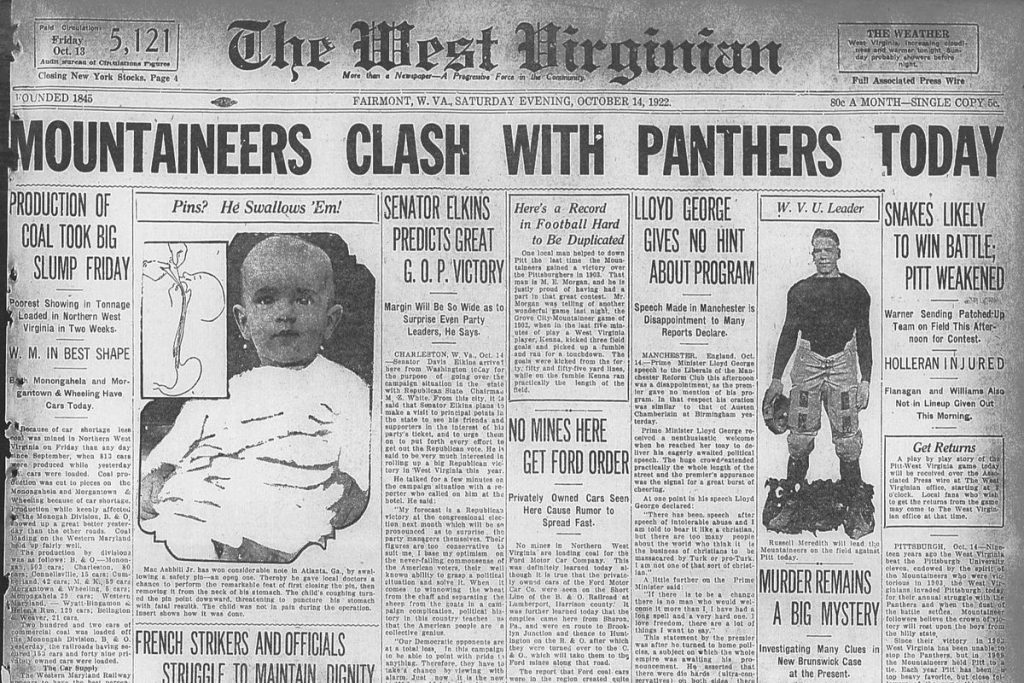WVRHC receives sixth NEH grant to digitize historical newspapers
Posted by Monte Maxwell.August 19th, 2022

The West Virginia University Libraries’ West Virginia and Regional History Center has received a $162,155 grant – its sixth from the National Endowment for the Humanities – to continue digitizing newspapers published in West Virginia from 1791 to 1927.
The award is part of the National Digital Newspaper Program (NDNP), a collaboration between the NEH and the Library of Congress to enlist libraries and institutions from around the country to create a digital database of historical United States newspapers. This grant brings the NEH’s total funding of the WVRHC’s efforts to $1,293,568.29.
“We are honored that the NEH continues to support our efforts to enhance access to the historical newspapers preserved in the WVRHC,” WVRHC Interim Director Lori Hostuttler said. “It’s a testament to the incalculable value of these resources and the influential role West Virginia has played in our nation’s history.”
The Chronicling America website – chroniclingamerica.loc.gov – provides access to more than 15 million newspaper pages from 1690 to 1963. So far, the WVRHC has contributed 500,000 pages from more than 105 historic West Virginia newspapers. And, because of this grant, another 100,000 pages will soon be added to the site.
WVRHC Curator Stewart Plein said this round of newspapers will focus on the timber industry and the three major impacts resulting from its operation within the state: its exponential growth, the devastating effect of deforestation, and the rise of conservation and reforestation.
Newspapers selected for this grant cycle will cover six counties, Pocahontas, Greenbrier, Nicholas, Randolph, Tucker, and Webster, all in the mountainous regions of the state.
“The story of the timber industry in West Virginia is as much a boom and bust cycle as that of the lumber towns that rose and fell in the path of clearcutting and deforestation. The unprecedented growth in lumbering operations not only changed the face of West Virginia, but as the only state entirely within the borders of Appalachia, the impact on forestry and timbering was felt across the region,” Plein said.
As settlements grew and towns emerged, small lumber companies set up operations near available water sources that made it possible to move logs via rafts. The introduction of the railroad and the advent of steam-powered equipment made previously unreachable mountainous regions accessible.
As late as 1870, thousands of square miles of virgin forest lay untouched, ripe for the taking. By 1880, there were 472 lumber mills in the state employing 3,765 men, with an output of 180,112, 000 board feet of lumber a year.
At the height of lumber operations, in 1909, there were 83 band mills, 1,441 lumber operations, producing one and a half billion feet of lumber in that year alone, Plein said. Between 1879 – 1912 more than 20 billion board feet were cut. That number represents 8,500,000 acres of virgin forest, or 85 percent, of the total timber in the state.
“By the 1920s, the destruction of the acres of virgin primary growth forest in West Virginia was nearly complete. Lumbermen failed to realize, and most wouldn’t have cared, that the vast forests had value beyond what could be stripped from them.” Plein said. “Though locals were often employed in these operations, a denuded forest left nothing to live on when the trees were stripped, wildlife was gone, streams were black with pollution, and fish were dead.”
Newspapers have been essential to documenting the timber industry, because most companies destroyed their records as they left the state.
“West Virginia’s historic newspapers will reveal every pro-development argument, every move a company made after stands were clear cut, every accident, the travails of immigrants, the after effects of deforestation and the rise of conservation in a state that has played a major role in the timber industry, in West Virginia, Appalachia and across the nation,” Plein said.
National Humanities Alliance Executive Director Stephen Kidd lauded the NEH for awarding $31.5 million in grants to support 226 humanities projects nationwide.
“The National Digital Newspaper Program grants will aid in the continued preservation of our nation’s history and culture through the digitization of local newspapers, including those that covered underrepresented histories,” Kidd said. “We are immensely proud of the NEH’s impact across the U.S. and will continue advocating for increased federal support for future grants in 2022 and beyond.”
Previously, the NEH funded WVU’s projects that focused on the Mine Wars; African-American newspapers; the Civil War, with reporting from both sides of the conflict; continuing struggles between eastern and western Virginia; West Virginia’s statehood movement and establishment; West Virginia’s 1872 Constitution; Reconstruction and the United States’ Centennial.





